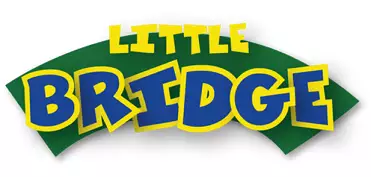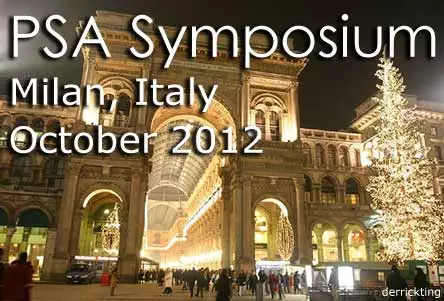Pete Sharma, one of the world’s leading experts on integrating technology into learning, will be “in the shadow of the Madonnina” this autumn as part of the PSA (Pete Sharma Associates) Symposium. The event on October 4th 2012 in Milan is being hosted by the British Consulate-General and sponsored by SMART Technologies, Richmond ELT and Little Bridge. UK Trade & Investment are also supporting the Symposium.
The title of the Symposium is “L’impatto delle nuove tecnologie sull’insegnamento delle lingue straniere” (“The impact of new technology on foreign language teaching”). This symposium builds on the success of similar events in Spain.
The speakers will include Pete and representatives from the sponsors. The exact topics and content are still to be confirmed, but here is a preview of the programme:
Keynote Presentation
Pete Sharma, Pete Sharma Associates Ltd
“New developments in Language Teaching and Learning in the Digital Age”
Technology has changed the teaching and learning of languages. However, technology changes quickly and it is sometimes difficult for teachers to follow new developments. It is not always easy to use new technology well inside and beyond the classroom. In his talk, Pete Sharma will describe some of the most important recent advances in new technology including m-learning, commercially produced digital materials, the interactive whiteboard and the virtual learning environment in the 21st century
Pete started his EFL career as a business English teacher in Madrid, moving to Finland before returning to the UK. He worked as teacher trainer, Director of Studies and school manager before becoming the Group teacher training and development manager for Linguarama, a business English organisation which is now part of the Marcus Evans group. In his capacity as a member of the Group Pedagogical Unit he inspected schools, taught writing seminars in the Middle and Far East, and helped create and run trainer training courses. He has written extensively about technology in language teaching. Pete recently changed from ESP to EAP, and currently divides his time between lecturing at Oxford Brookes University and on the Warwick University pre-sessional courses, and writing. He keeps a blog on using technology in ELT with co-author Barney Barrett. See: www.te4be.com
Luke Baxter & Cathy Smith
Richmond ELT
“Convergence”
 This is a term that encompasses many of the most important trends in the “digital world” today. Important examples include how tools, entertainment and work have converged onto a single device, so a person can have, say, a compass, a radio and a spreadsheet on their iPad. Another example and one which is very much at the forefront of digital predictions is “the cloud”, where content and computing converge and become accessible “anytime, anywhere and on any device”.
This is a term that encompasses many of the most important trends in the “digital world” today. Important examples include how tools, entertainment and work have converged onto a single device, so a person can have, say, a compass, a radio and a spreadsheet on their iPad. Another example and one which is very much at the forefront of digital predictions is “the cloud”, where content and computing converge and become accessible “anytime, anywhere and on any device”.
Using examples from Richmond’s Digital Books and Learning Platforms, this presentation will aim to show how convergence is already affecting ELT publishing. Luke and Cathy will show how many of the traditional components of a publisher’s course offering have already converged in a Digital Book that includes the Student’s Book, Teacher’s Book, Workbook and Class Audio. They will also look at how students can access the Learning Platforms to play games, comment on blogs and communicate with their teacher, who in turn can assign trackable tests and homework activities.
Finally, they will attempt to look forward and hazard some guesses as to how convergence will continue to affect ELT publishing. Can every course component converge onto a single device? Will the divide between paper and digital make any sense in the future? Will this mean the end of the printed book? Should ELT publishers view themselves solely as content providers and thus endeavour to provide this content in whatever way best suits the needs and situations of each individual customer?
Valeria Mordenti
Marketing Manager Italy & South East Europe at SMART Technologies
“The Interactive Whiteboard and Language Teaching”
 SMART created the world’s first interactive whiteboard in 1991 and they remain the world’s leading provider of interactive whiteboards. Incorporated in 1987, SMART has been committed to innovation and excellence for more than 25 years and has provided solutions for the education, higher education, business, government and military communities. More than two million SMART Board interactive whiteboards are used by over 40 million students and their teachers, and SMART products are used in more than 175 countries.
SMART created the world’s first interactive whiteboard in 1991 and they remain the world’s leading provider of interactive whiteboards. Incorporated in 1987, SMART has been committed to innovation and excellence for more than 25 years and has provided solutions for the education, higher education, business, government and military communities. More than two million SMART Board interactive whiteboards are used by over 40 million students and their teachers, and SMART products are used in more than 175 countries.
Paul Rogers
Little Bridge
“Making English Irresistible to Young Learners!”
 Paul is an award-winning author of over forty books for children, as well as of many well-known materials for the teaching of languages, including for teaching English. He’s an experienced linguist and has been both a primary and secondary teacher, as well as a lecturer in Education (at Goldsmiths College, University of London). Taking examples from Little Bridge, Paul will show how an innovative digital resource can:
Paul is an award-winning author of over forty books for children, as well as of many well-known materials for the teaching of languages, including for teaching English. He’s an experienced linguist and has been both a primary and secondary teacher, as well as a lecturer in Education (at Goldsmiths College, University of London). Taking examples from Little Bridge, Paul will show how an innovative digital resource can:
1. build a bridge between the learner and the English speaking world, setting the language in context through 3D animations and virtual reality
2. build a bridge between traditional teaching methods and the latest computer technology, dealing with grammar, for example, in a painless, natural way.
3. bridge the gap between work and play by making learning fun through a wide variety of motivating games, songs and activity types.
4. build a bridge between home and school by providing activities that children will do for pleasure, whilst allowing the school to keep track of everyone’s progress.
Registration and Contact Details
Entry to the Symposium will be free but by invitation only. Delegates will also need to register with the British Consulate-General. If you would like to attend this event, please contact Byron Russell at PSA:
Check the Events page on the PSA website for further details and updates about the Symposium: http://www.psa.eu.com/event/psa-symposium-milan
You can find out more about Pete Sharma and PSA on their website: http://www.psa.eu.com/
About PSA
Pete Sharma Associates Ltd was founded in October 2008. PSA is an educational consultancy and training organisation for language teachers. PSA runs courses worldwide for teachers of English as a Foreign Language, teacher trainers and academic managers on how to successfully integrate educational technology into their language courses. PSA also advises institutions on hardware and software for language teaching.
PSA has a core team of four directors who are responsible for ensuring that all PSA courses meet the highest standards of quality. The directors keep abreast of educational technology and liaise with the major hardware and software manufacturers and publishers. They use a number of associate trainers, specialised in integrating technology into language courses. Their activities are supported by many associate organisations including The Pyramid Group.
Interested in blended learning? Robert Dennis attended the recent “Digital Transformation in the English Teaching World” event co-hosted by Pearson Longman and the British Council. Read the full report on the Milan English blog:













